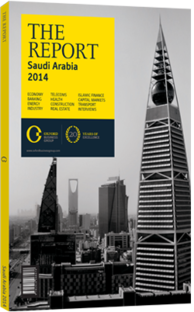Working together: Public-private partnerships are seen as the way to develop the industry
Of the SR100bn ($26.66bn) that the government’s tourism strategy estimates will be needed over a 10-year period to develop the industry, the state expects to cover about a third, with the remaining two-thirds to be provided by the private sector. Public-private partnerships (PPPs) are seen as the way to achieve this, and thus the government is working to encourage and facilitate them as much as possible.
As part of its efforts to consolidate the industry, the Saudi Commission for Tourism and Antiquities (SCTA) has entered into strategic partnerships with 88 state and private organisations. Assistance for investors is available, including providing statistics, carrying out feasibility studies, issuing licences and offering bureaucratic guidance to help investors fulfil the requirements of the Saudi Arabian General Investment Authority (SAGIA). The SCTA also regulates the industry and lobbies to change regulations to promote tourism development, particularly in areas such as visas.
FINANCE: Beyond providing guidance, the SCTA is working to make financing available for tourism development projects. A government holding company owned by the General Investment Fund is to be set up, while the Saudi Tourism Development and Investment Company will have SR200m ($53.32m) of capital. Salah Al Bukhayyet, vice-president for investment and development at the SCTA, told OBG that the benefit of this “is that rather than having to go to the Council of Ministers for each new project, the board of this holding company can approve funding for projects”. This should greatly increase the ease and speed with which investors can gain financing, while still being regulated and governed effectively by the SCTA. Agreements have already been signed with a number of state financing institutions and these bodies will cooperate with government agencies to lend to private investors involved in PPPs on a business-to-business model. The company is expected to be operational in late 2014 or early 2015.
The King Abdullah Project for Urban Heritage Development is another means by which finance is being made available and looks set to boost development and provide opportunities for investors at sites which would otherwise not be so attractive.
STRUCTURE: Multiple PPPs have already been established by the SCTA, and while their structure varies from project to project, generally government involvement comes in two forms: the provision of infrastructure and of land. While land could simply be given to the projects, the model commonly used is for the land to be valued, and that value equated to a capital share in a joint stock company into which private sector investors also buy, meaning that the government maintains a direct interest and role in the projects.
PROJECTS: One key sector project that is being carried out as a PPP is Al Uqair, a 10m-sq-metre, multi-use tourism resort on the eastern coast, which is scheduled to be completed in three 10-year phases. This is the first tourism project fully adopted by the government, and the SCTA is on the verge of establishing the project company. The government’s share comes through the municipality and the Ministry of Rural Affairs’ provision of the land and construction of infrastructure up to the boundary of the site. The infrastructure itself is an investment worth SR1.4bn ($373m). Total investment is expected to run to SR34bn ($9.06bn), with SR17bn ($4.53bn) coming from a mix of public funds and the rest coming from the private sector.
More resorts and tourism destinations are planned along similar lines to Al Uqair, where the municipality enters as a shareholder based on the value of the land. Planning has already been carried out for several sites, including at Al Rais, Okaz Cultural City in Taif, and as part of a project to rehabilitate, protect and utilise heritage sites as hotels in Riyadh, Jeddah, Al Ula and Al Ahsa.
The steps being taken by the government to encourage and facilitate private participation in the development of tourism mean it is becoming an increasingly attractive option, both for domestic and foreign investors, while the underlying economic and social markers of the Kingdom point to increasing demand.
You have reached the limit of premium articles you can view for free.
Choose from the options below to purchase print or digital editions of our Reports. You can also purchase a website subscription giving you unlimited access to all of our Reports online for 12 months.
If you have already purchased this Report or have a website subscription, please login to continue.

